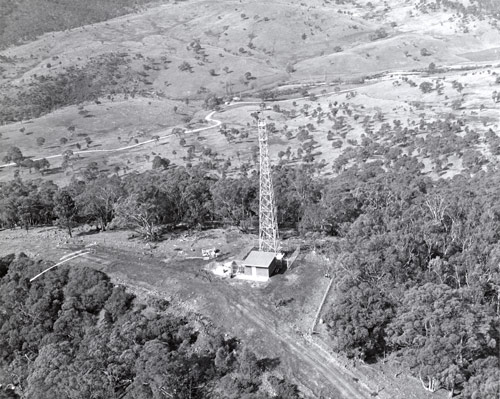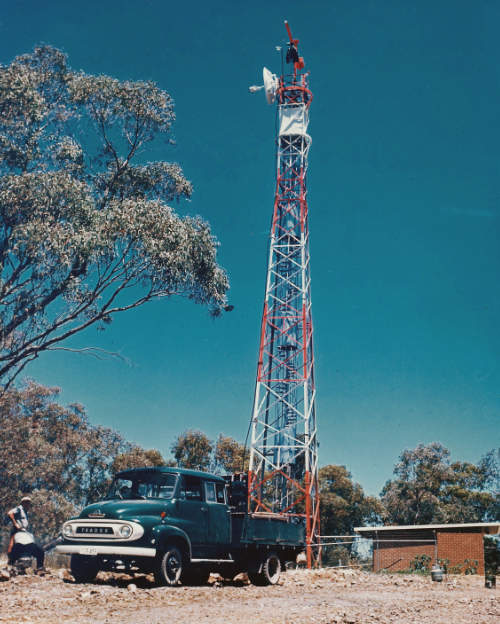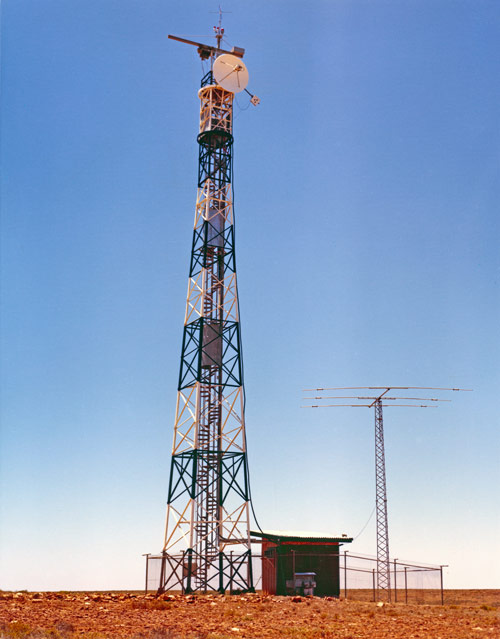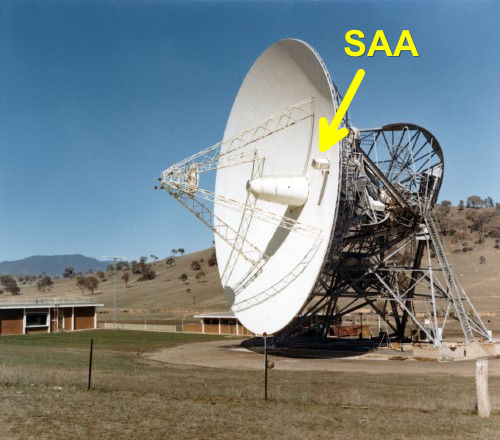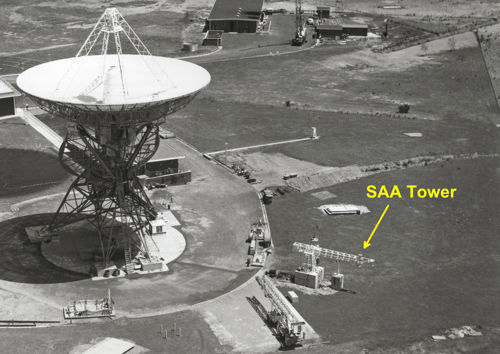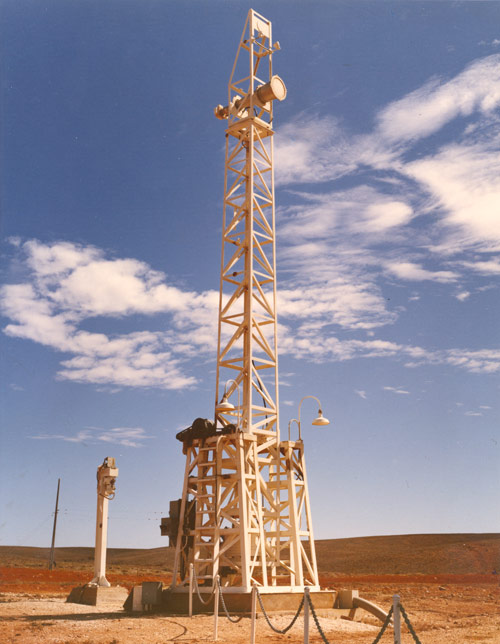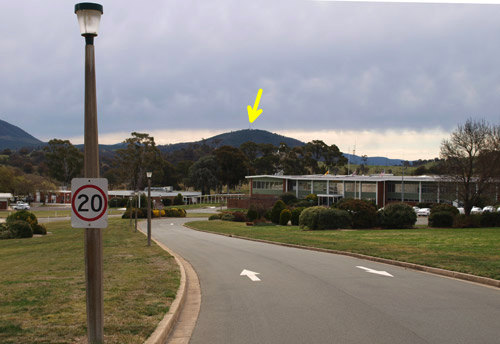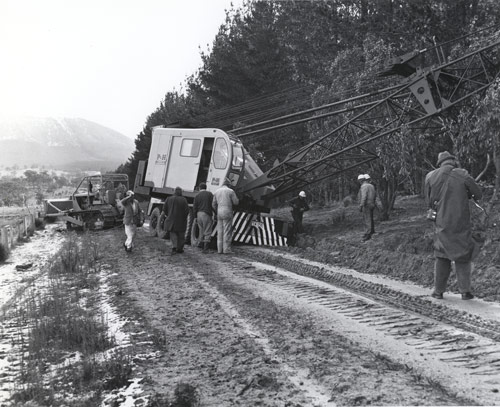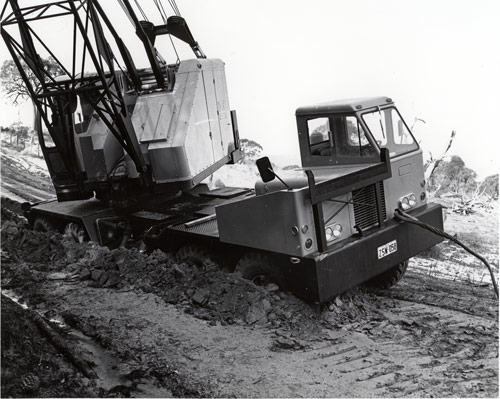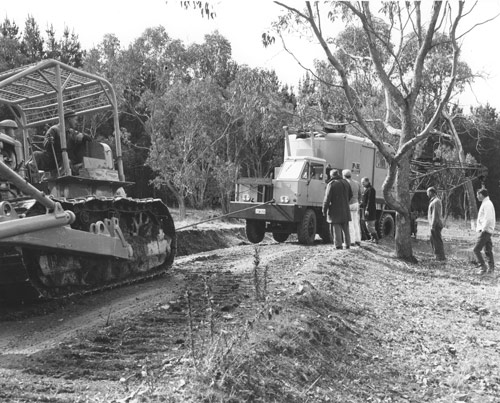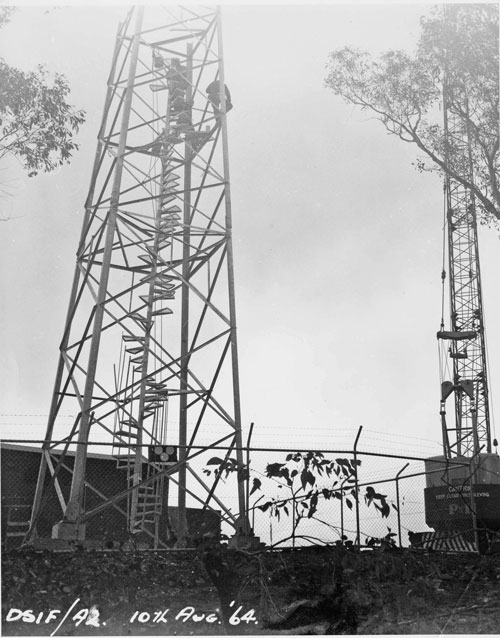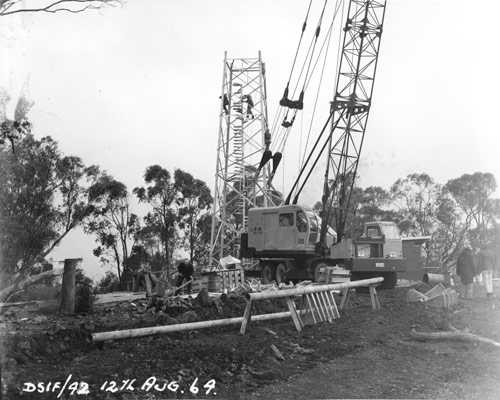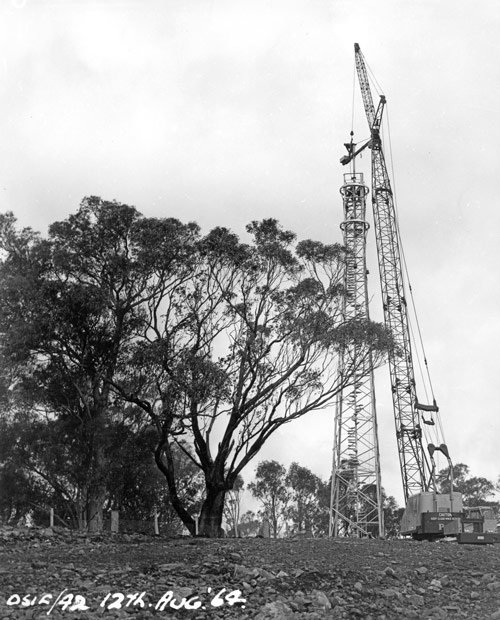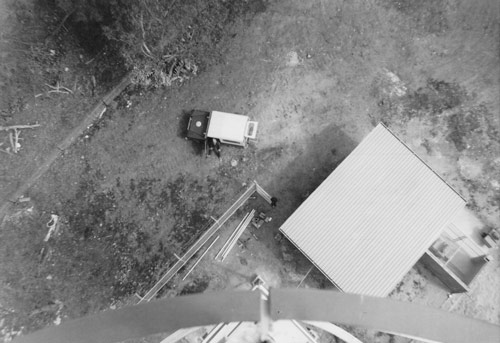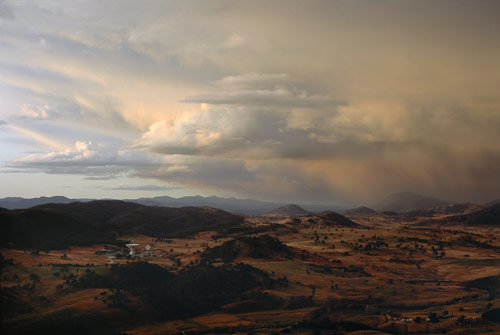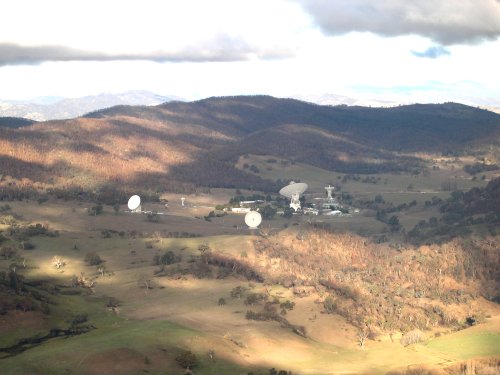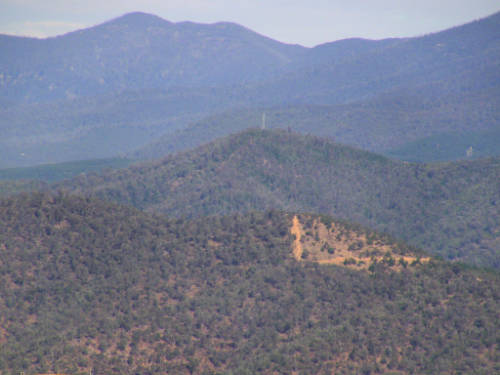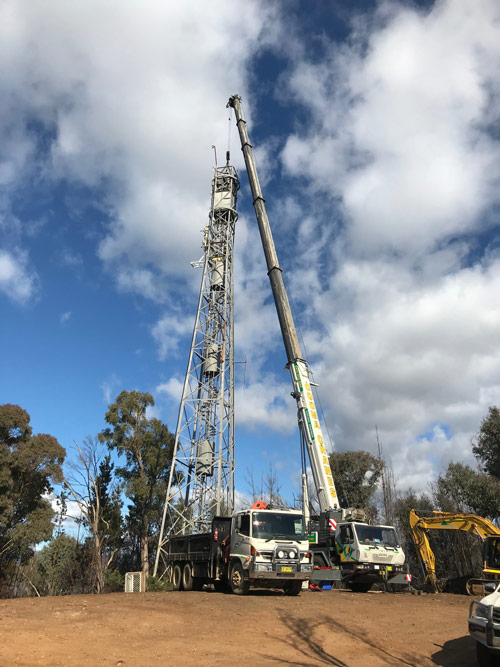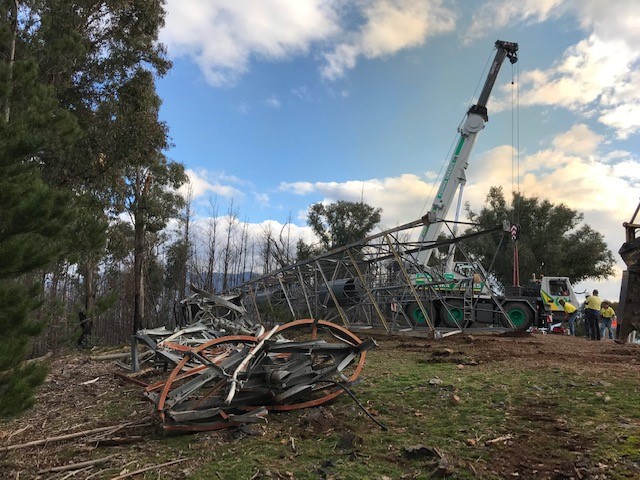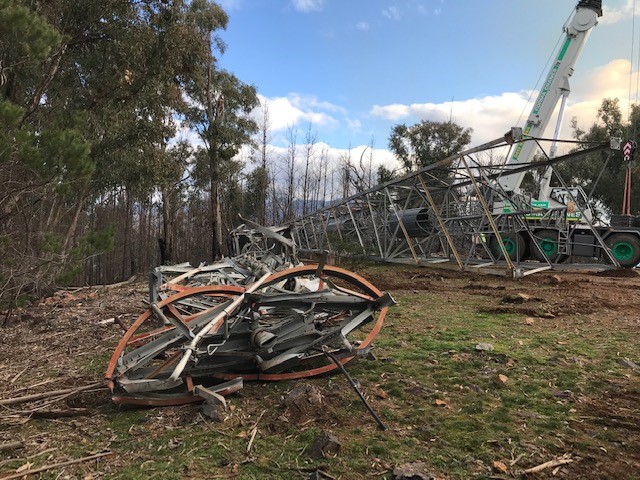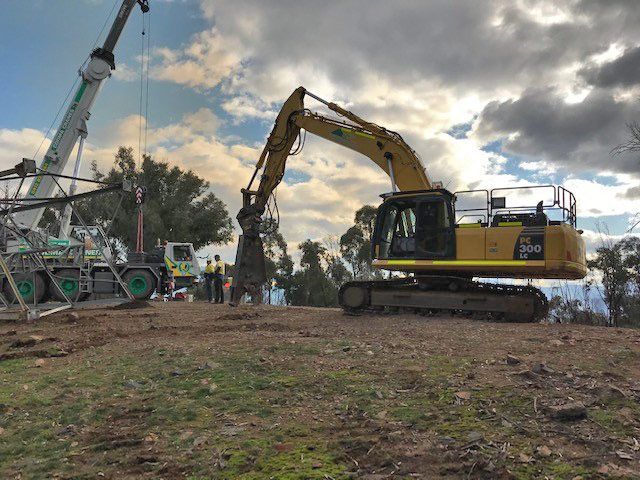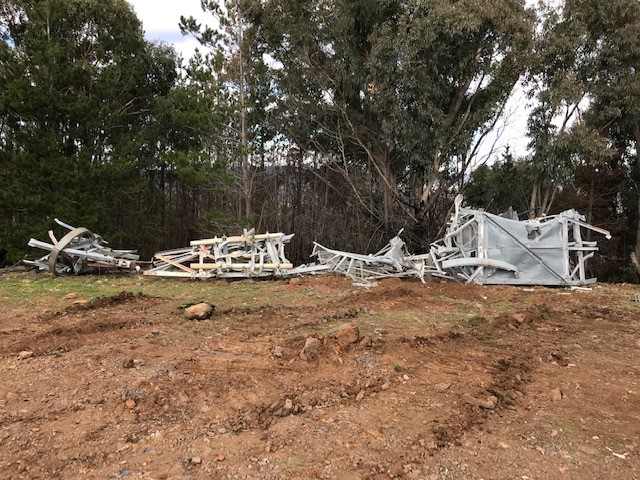For almost 56 years, DSS42’s Collimation Tower stood overlooking the Tidbinbilla Valley on a hill 3.54km north west of the DSS42 antenna site.
The tower was built in the winter of 1964 and served as a key part of the tracking station.
DSS 42 Collimation Tower
“The Col Tower”, as it was known to both DSN and MSFN, was an essential component for engineering and operational system testing by means of an RF calibrated transponder signal source of any polarisation via an 8 foot (2.4m) dish on the tower. The transponder was remotely controllable from the Control Room at Tidbinbilla.
|
The Collimation Tower not long after construction.
Preserved and scanned by John Heath. |
|
The DSS41 Collimation Tower at Island Lagoon, Woomera. The design is similar to the tower at Tidbinbilla.
At right is an antenna to receive WWV time signals.
With thanks to John Heath. Scan by Colin Mackellar. |
DSN
Engineering system tests on DSS42 Antenna used the Col Tower to precisely calibrate Hour Angle and Declination readings. Engineering tests on the RF System used the various polarised RF outputs from the Col Tower dish to set up the Antenna waveguide feed.
In the DSN, equipment checkout or countdown prior to a scheduled track was not minutely detailed and thus what was tested was the responsibility of the Station Management. During DSS42’s early operational period in 1965, pre-track countdowns extensively exercised and tested the functions of all subsystems. At this time, the Col Tower was used on every countdown to calibrate the phase and gain of the Receiver outputs to the Antenna Servo system for auto-tracking the spacecraft. As time went on, experience showed that the variations were very small and a quick check was all that was necessary.
MSFN
The Honeysuckle’s Apollo Wing site at Tidbinbilla (HSKX) used the Col Tower for engineering system tests in similar manner to the DSN.
Operationally, the MSFN was far more interested in the detail of each subsystem and had developed in earlier Manned Programs a standardised pre-track countdown called CADFISS (Computation and Data Flow Integrated Sub-System). For every operational track or activity during Apollo at HSKX, the station had to pass the CADFISS test to be considered GREEN.
One of the many CADFISS tests was for the Antenna to auto-track the Col Tower and feed the Tracking Data live to Goddard who checked the accuracy and stability of the Antenna in auto-track.
SAA Acquisition Collimation Tower
The S-Band Acquisition Aid (SAA) was a wide beam-width antenna used to acquire newly launched spacecraft still in near-earth orbit.
|
The S-Band Acquisition Aid.
Photo preserved by Les Whaley. Scan by Mike Dinn. |
Because the SAA (mounted in the dish surface) had such a wide beam width, set-up and calibration was not possible using the remote Col Tower. An on-site tower and feed was located on the main Antenna pad. The SAA Tower could be raised and lowered from controls at its base as required.
In DSS42’s early DSN days, it was always required to track newly launched interplanetary or lunar spacecraft, so engineering and operational tests were done on the SAA using its Col Tower.
|
The SAA Tower beside DSS42 in its lowered position.
Scan by John Heath. |
|
This photo shows the DSS41 SAA Tower at Island Lagoon, Woomera. The design is similar to the tower at Tidbinbilla.
With thanks to John Heath. Scan by Colin Mackellar. |
For the Apollo era, the SAA was used on most missions and pre-flight calibration used the SAA Col Tower.
Fortunately for the Ops Teams, the Goddard CADFISS did not require HSKX to auto-track the SAA Col Tower.
Mike Dinn adds,
During Apollo 9 both the CSM and LM had to be tracked separately. So DSS42/HSKX had to do its best to track earth orbit. This was largely achieved because of the 25 degree beam width of the SAA, and driving the antenna across the sky at its maximum rate.
______________________
When he was Station Director, Mike Dinn had suggested to Telstra that the tower might be useful as a mobile telephone base station, but the idea was not taken up.
As technology changed, the Coll Tower had not been used for many years – at least since the decommissioning of DSS-46 in 2010.
By early June 2020, safety concerns led to the dismantling of the tower. Thus, one of the last pieces of hardware from the original Tidbinbilla installation is gone.
